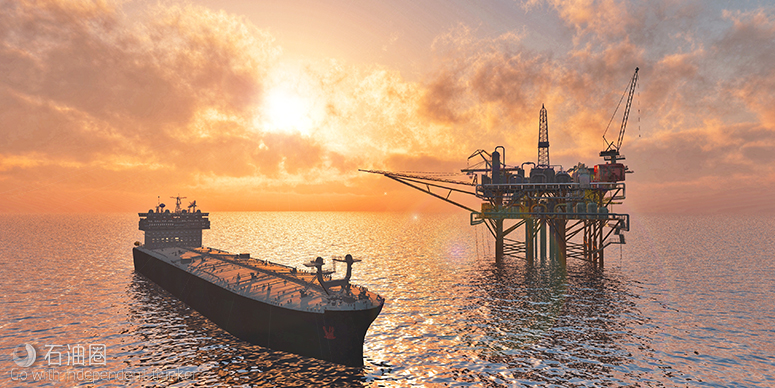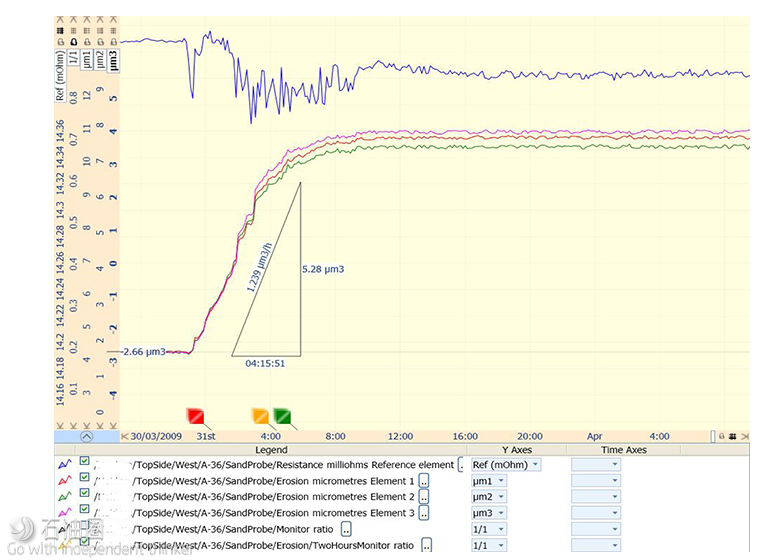Maximizing Well Potential
Operators gain production control and increase flow assurance through sand monitoring.
As profit margins remain tight, it has become essential for operators to deploy cost-effective, flexible and innovative solutions to ensure that wells perform to their full potential, production goals are met and that there is economic and seamless delivery of hydrocarbons from reservoir to refinery.
Yet, flow assurance is dependent on a broad variety of factors from reservoir fluid properties to hydrate buildup to scale and heavy oil. One of the main obstacles for flow assurance is the presence of sand, and several technological innovations address this challenge.
Threat of sand
Sand remains a major threat to oil and gas flow assurance. Erosion from produced sand can have a significant impact: damaging production wells, pipelines and flowlines; eroding completion components; and impeding wellbore access.
Furthermore, sand also can interfere with the separation of oil and water and—if such sand particles become entrained—may even cause further erosive and production damage when water is reinjected into the reservoir.
It is estimated that more than half of all existing wells will require sand control throughout their lifetimes. Aging oil and gas assets and the increased complexity of deepwater wells with higher fluid velocities both increase the likelihood of the presence of sand.
Although it was previously deemed acceptable to limit well production to avoid the potential for sand contamination, the rising water production and increased pressures to optimize recovery have established conditions where the presence of sand is often the norm.
This chart features data collected from both a sand erosion probe and acoustic detector operating together. (Source: Emerson Automation Solutions)
Electrical resistance and acoustics
Whereas previously flow rates, water cuts, pressure drops and temperature distributions were used as an approximate guide to sand production, technology innovations over the past few years in electrical resistance and acoustics have led to a more immediate and detailed insight into sand.
Erosion-based intrusive sensors measure actual metal loss caused by the impact of sand particles. Many are based on the electrical resistance principle, where metal loss on the element is measured as increased electrical resistance in a sensing element exposed to sand erosion. Sand production rates can then be quantified by combining measured metal loss rates with average sand particle size and flow data.
In one example, Emerson’s in-line sand erosion probes measured metal loss during an unexpected sand burst at a North Sea oil and gas platform. Sand bursts can be complex and unpredictable events with a significant potential impact on flow assurance and the operational effectiveness of the well.
In this case, the burst was detected almost immediately when a sand probe registered a metal loss of 50 nanometers, triggering an alarm and a prompt adjustment of production rates to a level where sand production stopped. Within 4 hours the sand incident was mitigated, the well was saved, and flow assurance and production continued. Total metal loss during the period was 5 μm.
Acoustic-based nonintrusive sensors monitor the noise caused when sand particles impact on the pipe wall. Such sensors utilize the acoustic energy generated by sand particles to calculate sand production in multiphase pipeline flows, with sand quantification often measured in grams per second.
However, both in-line electrical resistance erosion sensors and nonintrusive ultrasonic, acoustic sensors are all the more effective when combined where they can confirm the occurrence and severity of a sand event and give operators the necessary confidence to make the right production decisions. The technologies have different benefits as well. In providing an immediate response to the onset of sand production, acoustic sensors are well-suited to production optimization programs and the need to estimate maximum sand-free production rates.
Sand erosion-based sensors, on the other hand, are able to accurately determine the short- and long-term effects of damage caused by sand with a wider coverage of sand distribution inside the flowline. Both systems also quantify the amount of sand produced when flow velocity information is provided as an input.
In addition to the North Sea, Emerson’s acoustic and erosion-based sand monitoring sensors are being used on key deepwater fields such as Petrobras’ Cascade and Chinook fields in the Gulf of Mexico. In these cases, the sand sensors are working alongside multiphase meters and pressure and temperature sensor systems to minimize erosion damage, optimize production flow rates and secure flow assurance.
It is the ability of sand monitors to work alongside other instrumentation that has ensured sand instrumentation forms an important element in protecting flow assurance. This is facilitated by a scalable and distributed software architecture—in Emerson’s case, Roxar Fieldwatch—that distributes detailed data from subsea instrumentation for efficient online analysis, condition monitoring and flow assurance.
One example of Roxar Fieldwatch in action is the Heidrun Field, operated by Statoil, where there was a need to increase the field’s sand monitoring capabilities to allow the maximum amount of sand without affecting production and flow assurance requirements. The software also would enable Statoil to meet the challenges of increased water content and more gas (more sand and higher velocities).
A new sand management module was developed jointly between Statoil and Emerson for the field. The software enabled Statoil to respond faster to changes in sand production conditions, thus allowing Statoil to secure control of significant sand production from a well and establish maximum acceptable sand rates for production optimization and flow assurance.
Growth in wireless technology
The growth in automated and, in some cases, unmanned platforms also has changed the parameters for flow assurance solutions with a growth in wireless-based and automated instrumentation. Wireless technology significantly reduces installation costs compared to wired online systems and enables monitoring in previously inaccessible areas.
It is for this reason that Emerson has developed topside corrosion and sand erosion wireless transmitters based on intrusive sensors installed into pipes or vessels. The transmitters can be directly integrated within WirelessHART networks, a wireless sensor networking technology, to provide a complete asset integrity management and flow assurance system for operators.
In addition, ultrasonic instruments—wireless devices that measure wall thickness by looking at the time it takes an ultrasonic pulse to travel through the metal—also can operate alongside other sand monitoring sensors. Ultrasonic instruments are a valuable topside integrity confirmation tool in a full flow assurance solution.
One recent sand erosion wireless monitoring deployment was with integrity management specialist Stork on a North Sea platform, where the wireless devices helped extend equipment life, increase production and protect flow assurance.
Flow assurance strategies are all about negating production threats, providing an insight into operations and maximizing production. Sand monitoring and management technologies are doing just that.

 石油圈
石油圈

